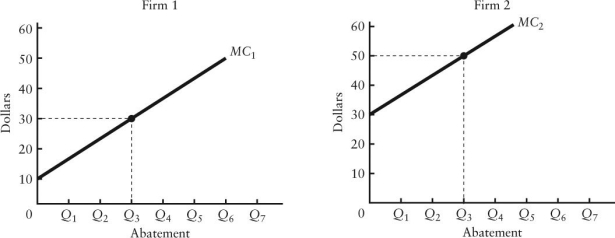Multiple Choice
The diagram below shows the marginal costs of pollution abatement for two firms,Firm 1 and Firm 2.  FIGURE 17-5
FIGURE 17-5
-Refer to Figure 17-5.Suppose each firm is currently abating pollution to the level  .Which of the following statements is true?
.Which of the following statements is true?
A) This outcome is efficient because both firms are abating the same amount.
B) This outcome is not allocatively efficient because the marginal benefits and marginal costs of abatement are not equated.
C) This outcome is not allocatively efficient because less than 100% abatement is being achieved.
D) This outcome is not productively efficient because one firm is abating more pollution than the other.
E) This outcome is not productively efficient because the total cost of achieving this level of abatement is not minimized.
Correct Answer:

Verified
Correct Answer:
Verified
Q87: The table below shows the marginal benefit
Q88: Consider an oil company extracting oil from
Q89: The main advantage of using market-based schemes
Q90: The diagram below shows a market for
Q91: Direct pollution controls can be inefficient because,for
Q93: Zero pollution is almost surely NOT a
Q94: When firms in an industry have fully
Q95: Suppose a firm producing roof shingles imposes
Q96: The diagram below shows the marginal cost
Q97: The diagram below shows the marginal cost